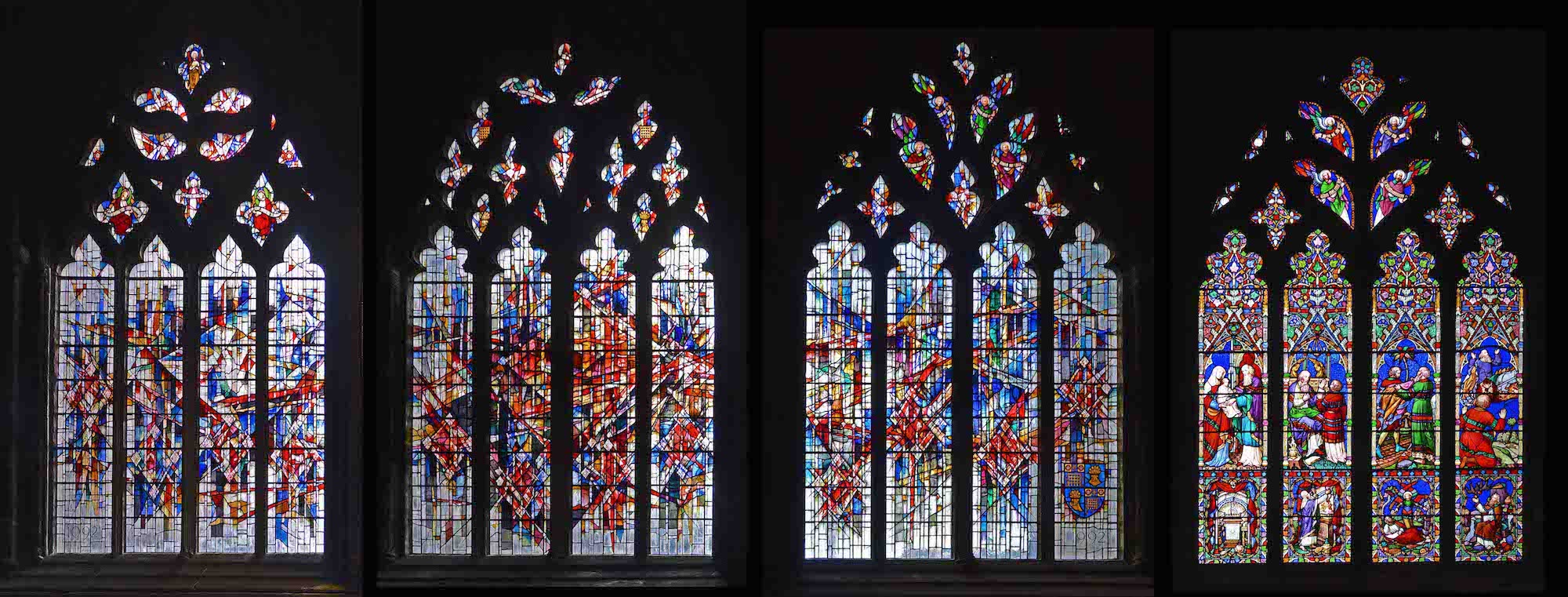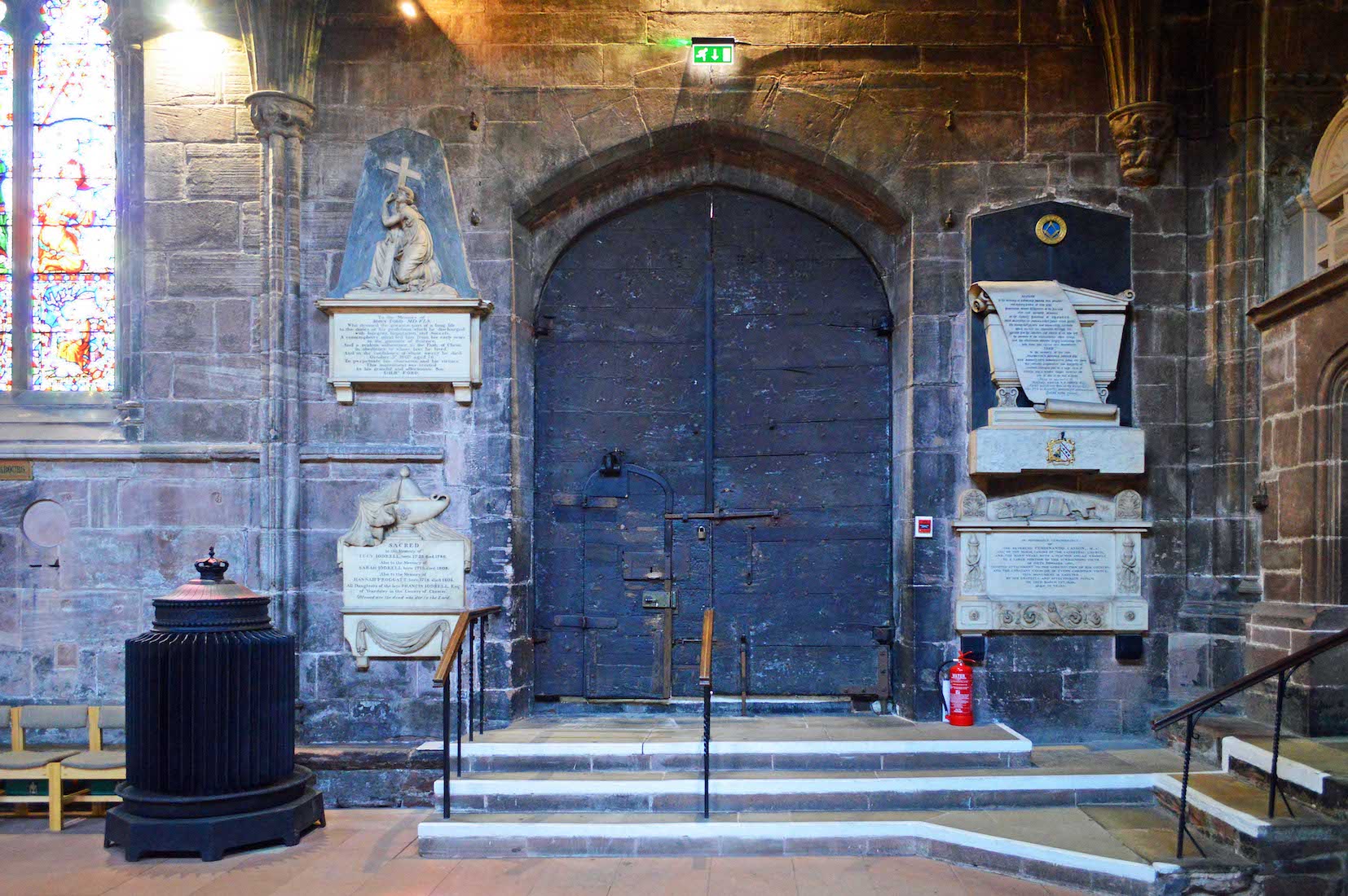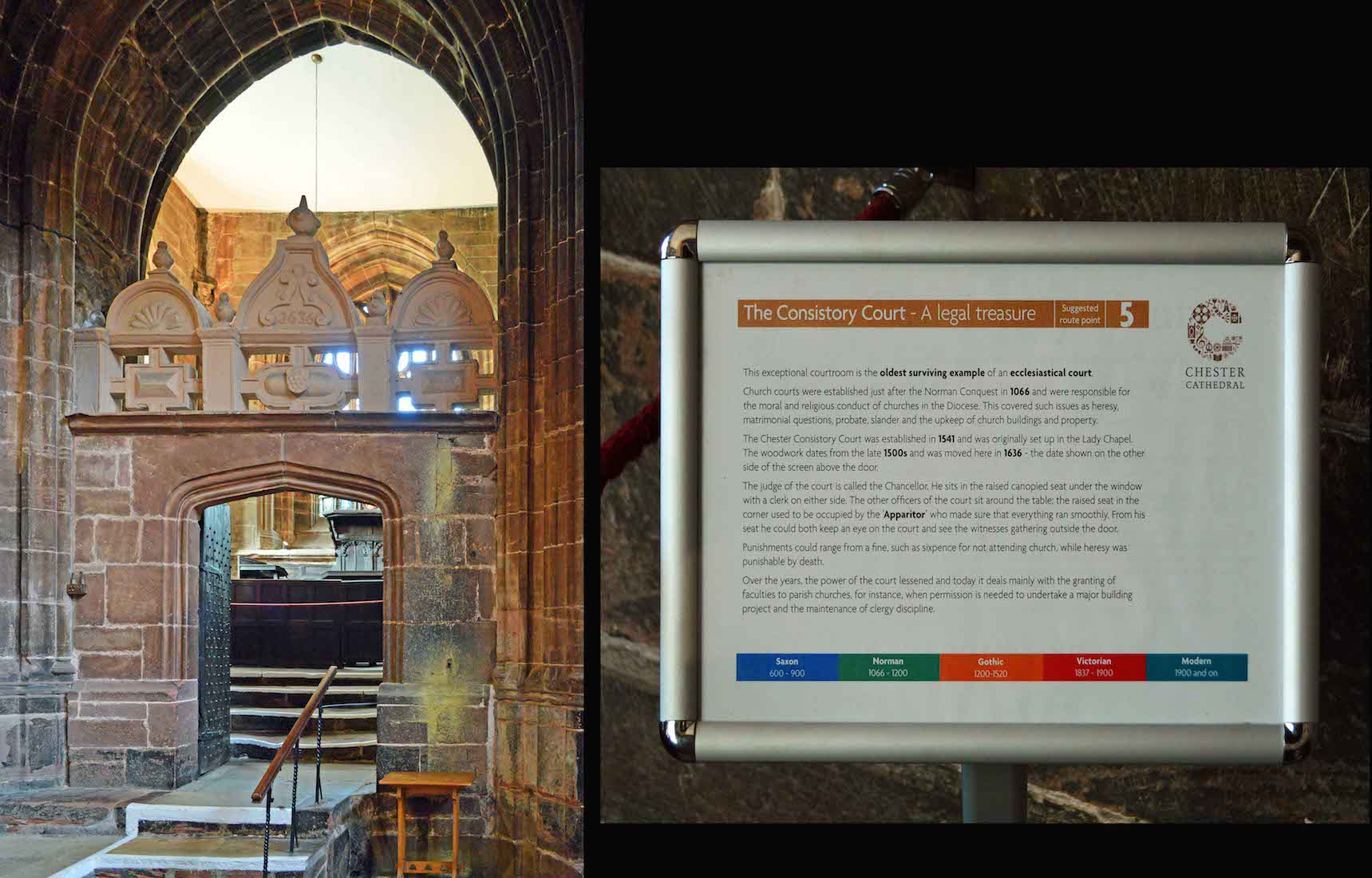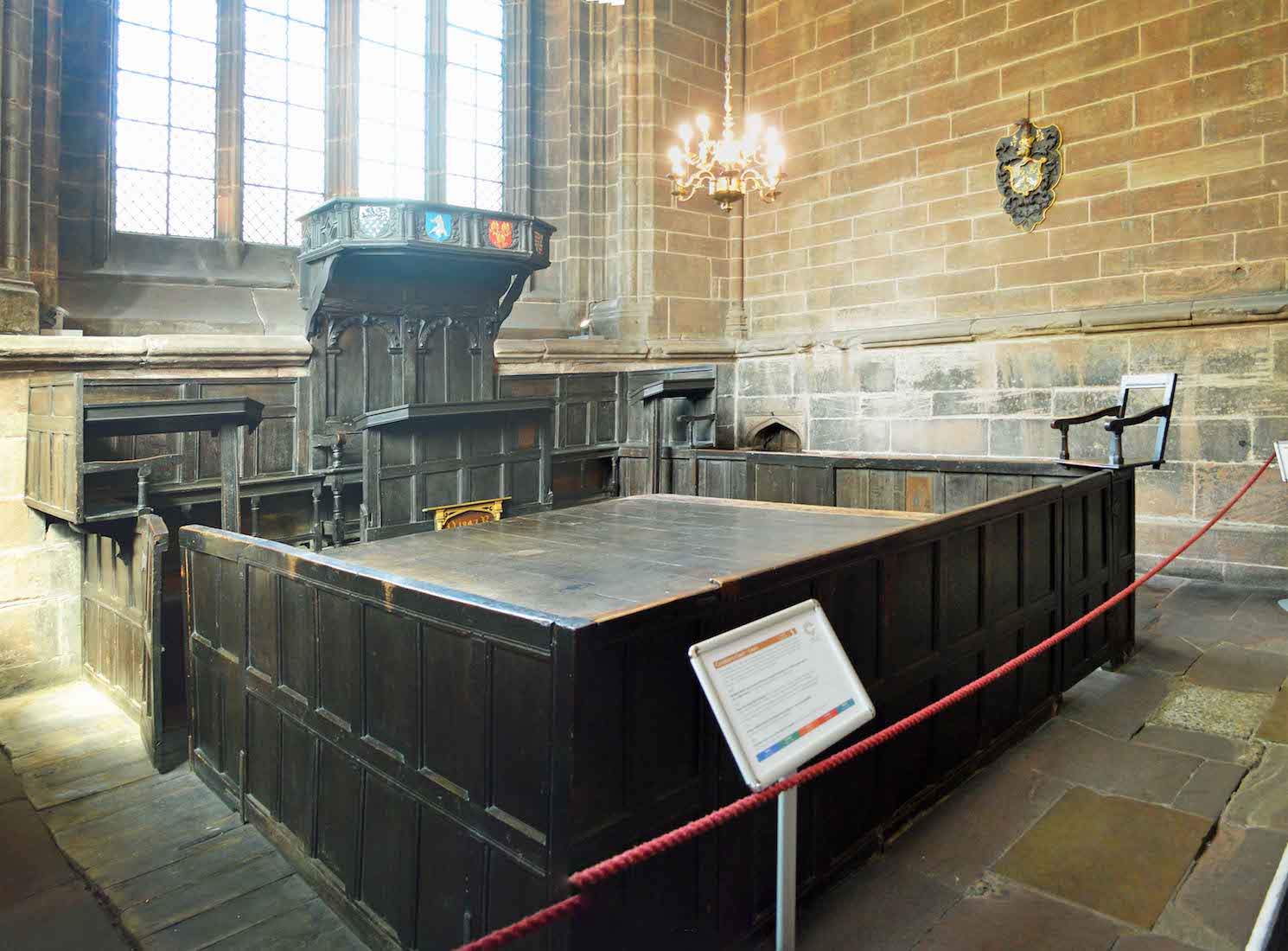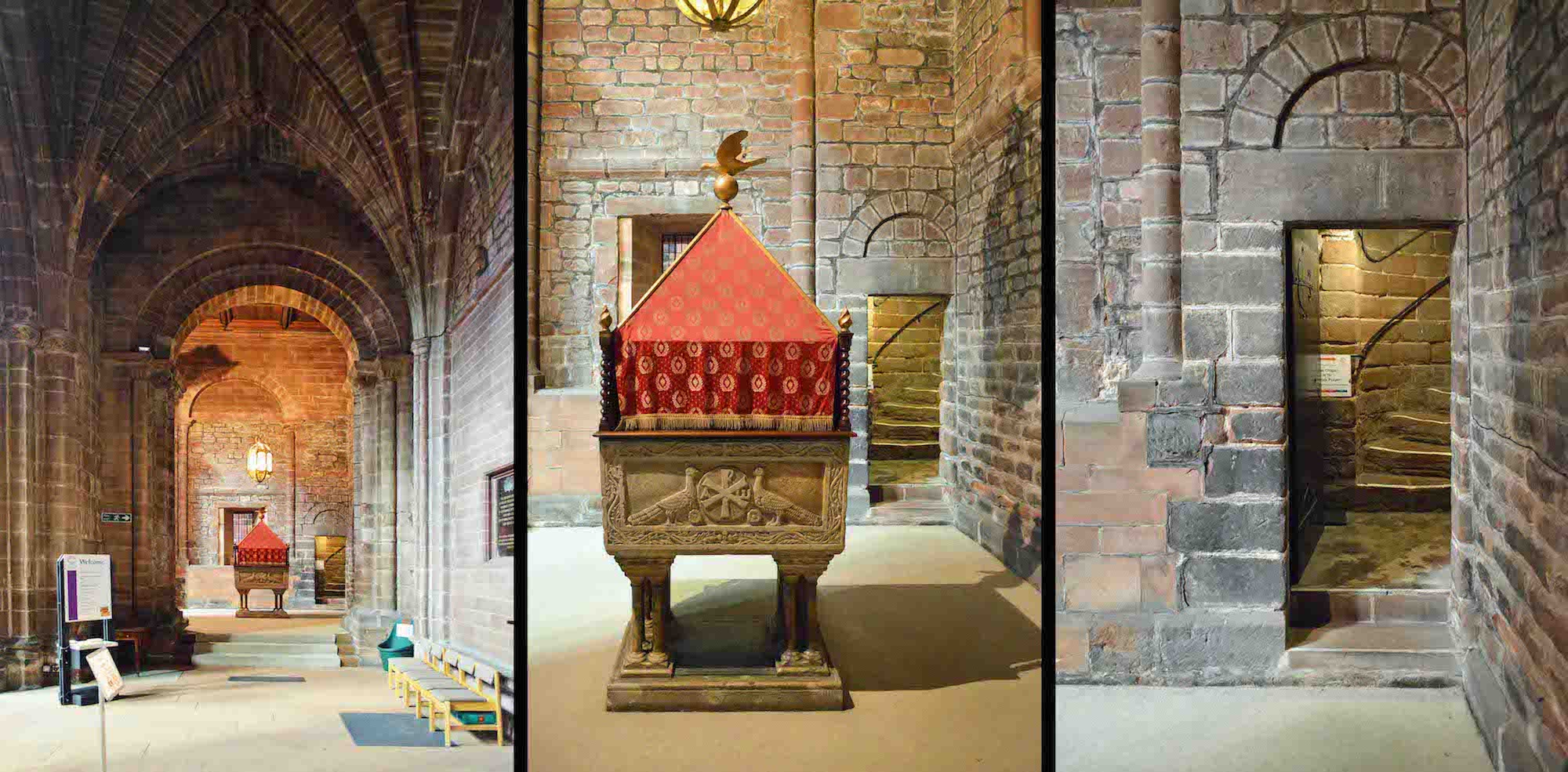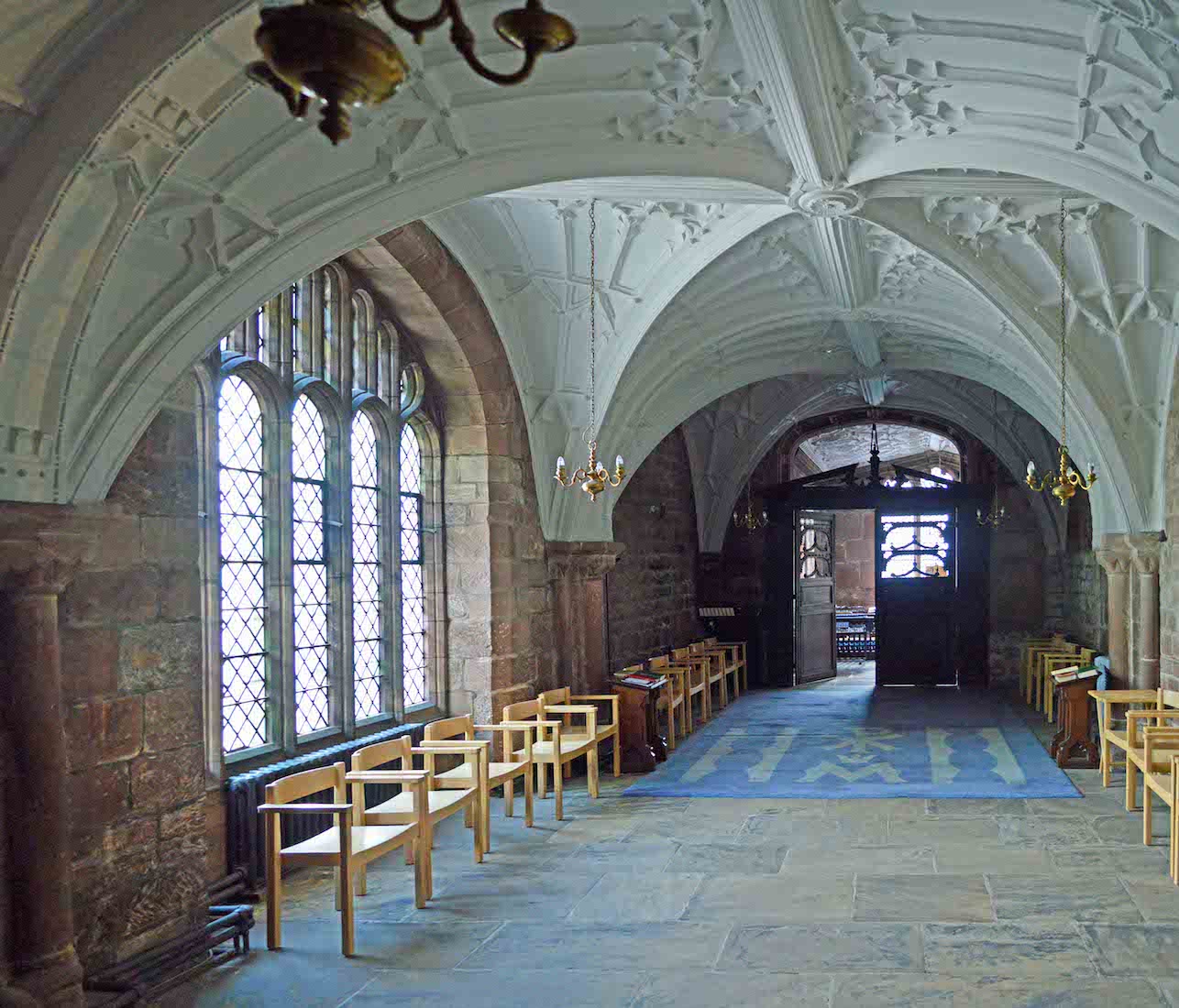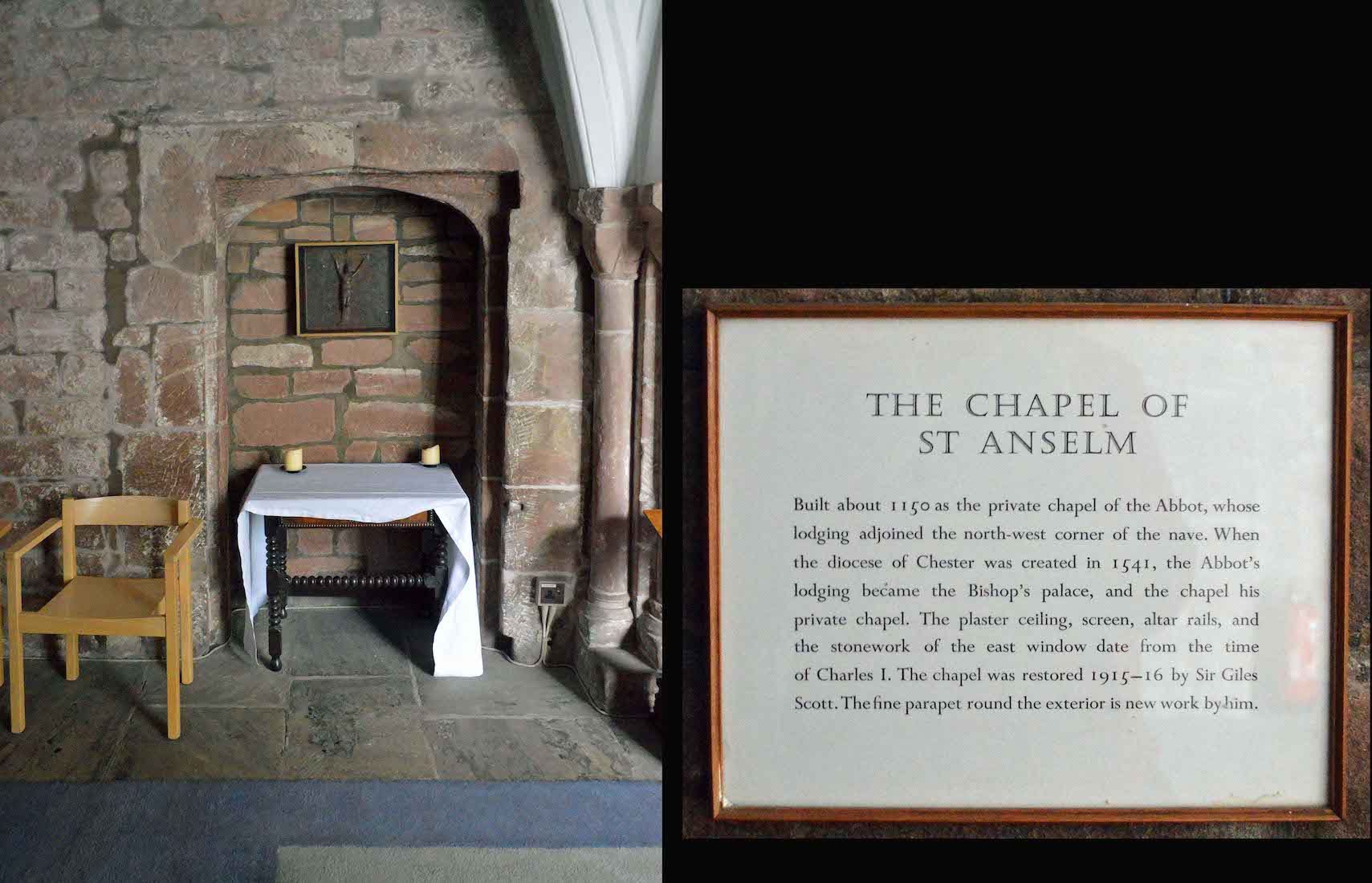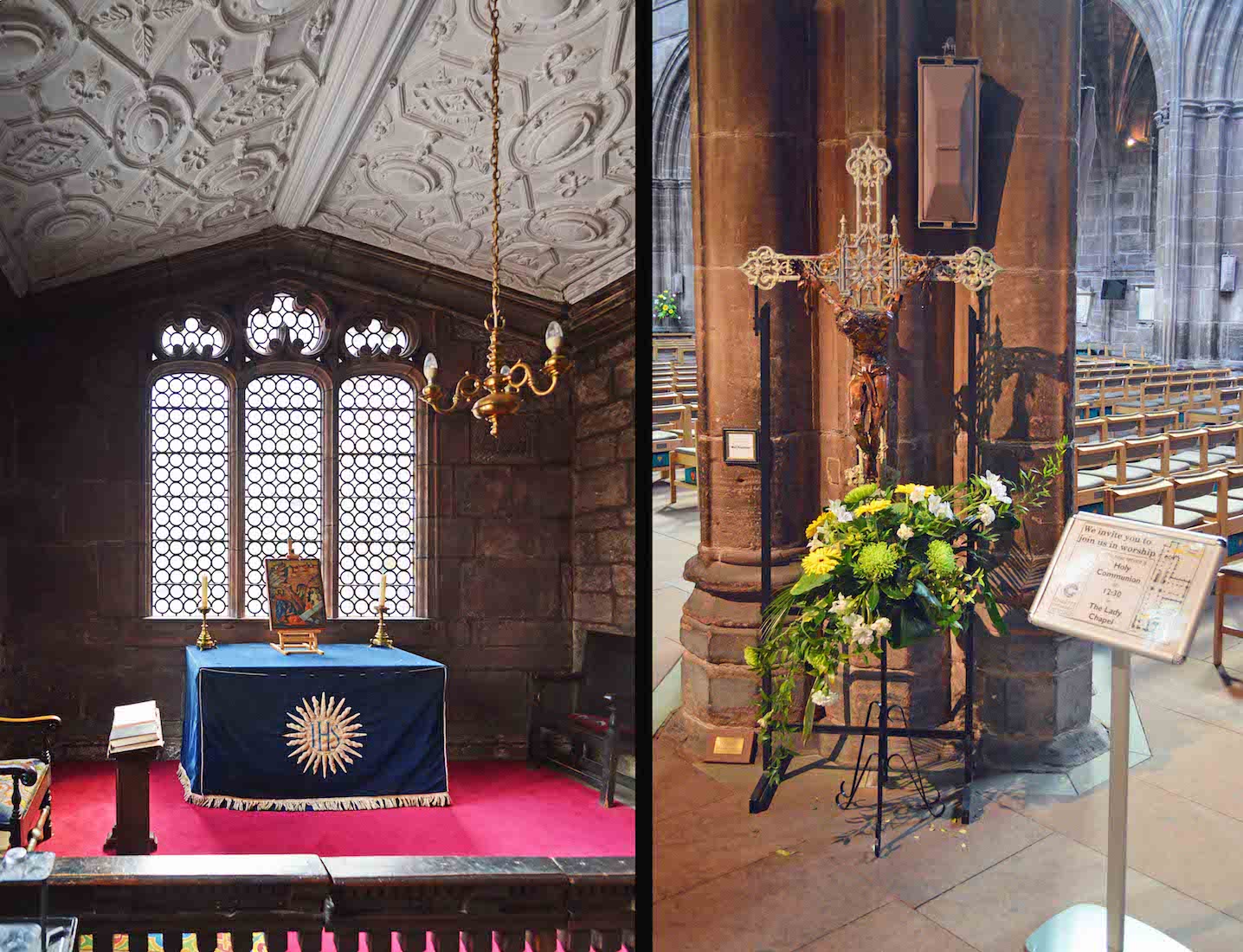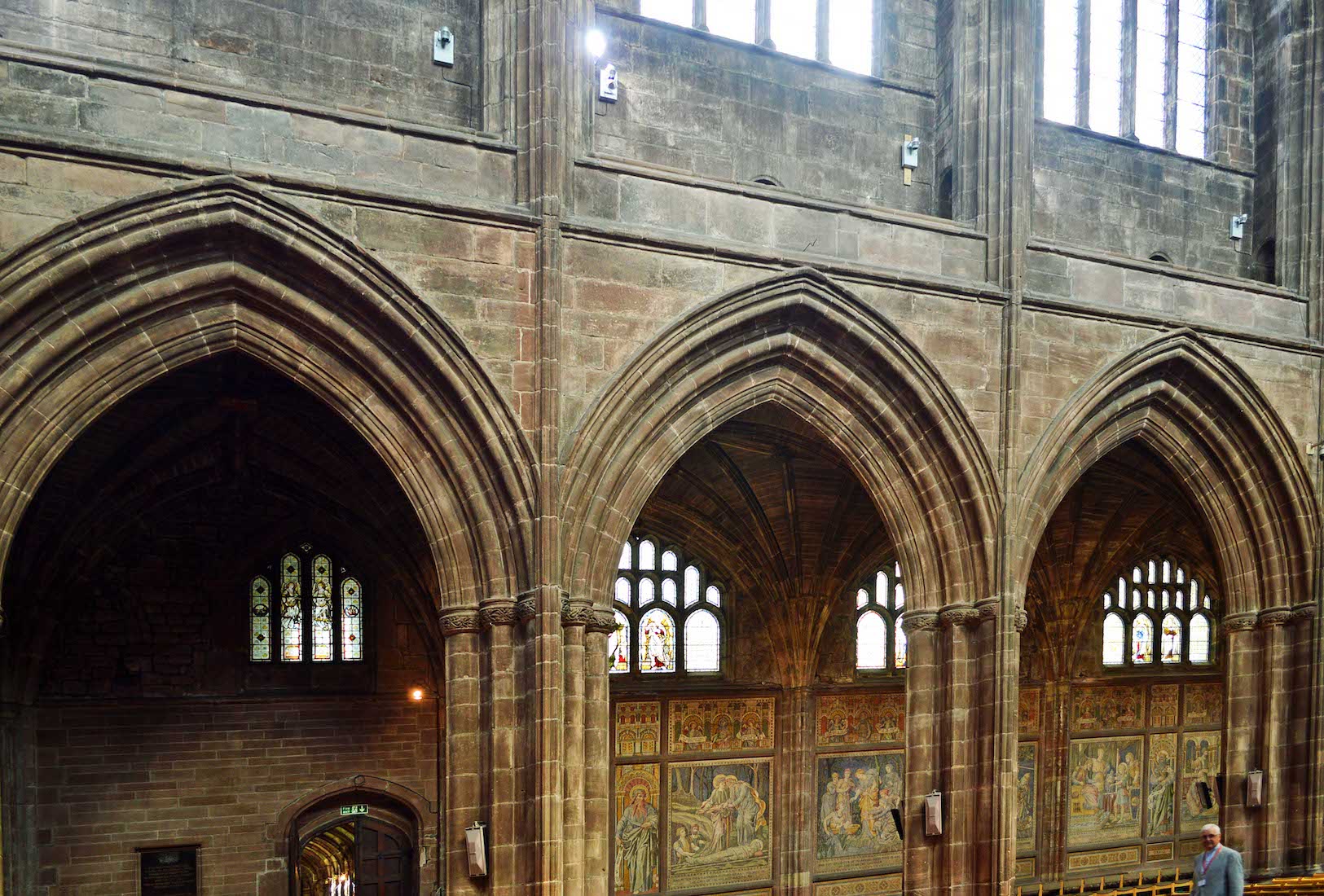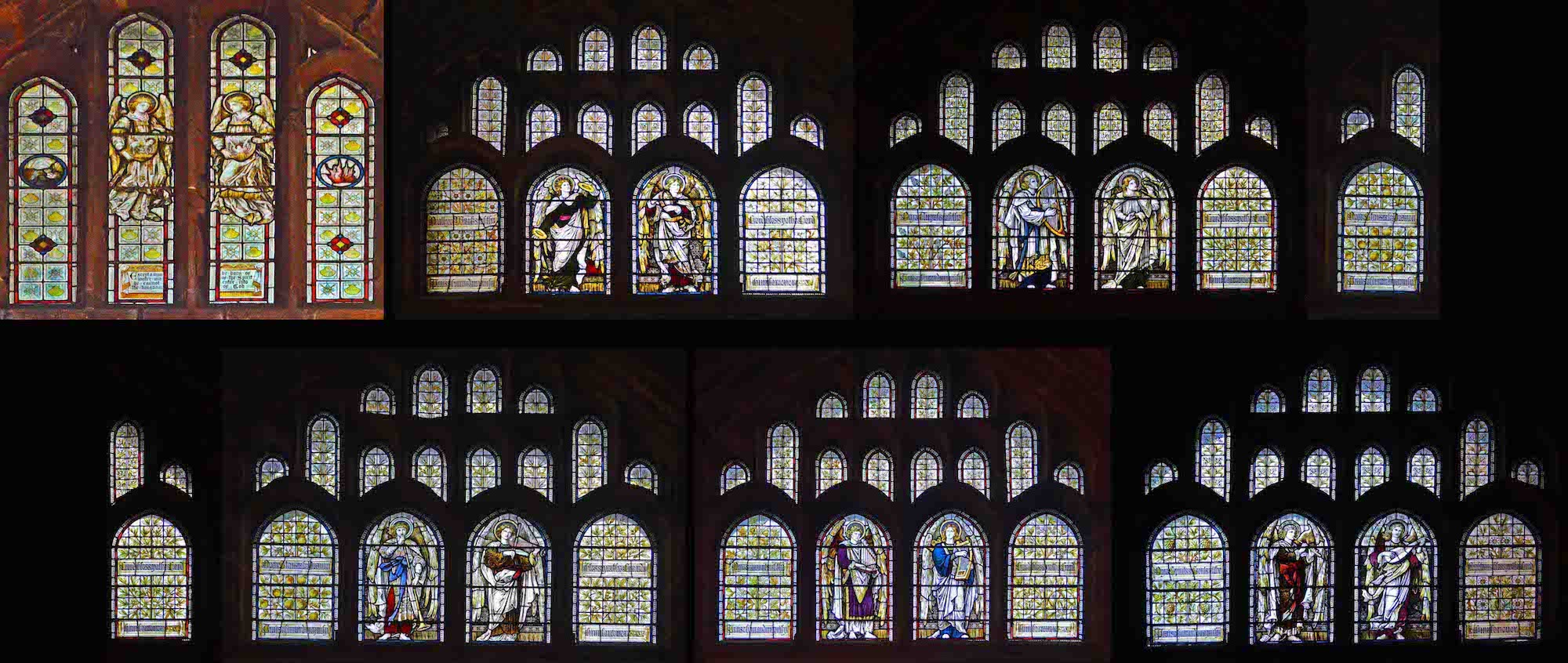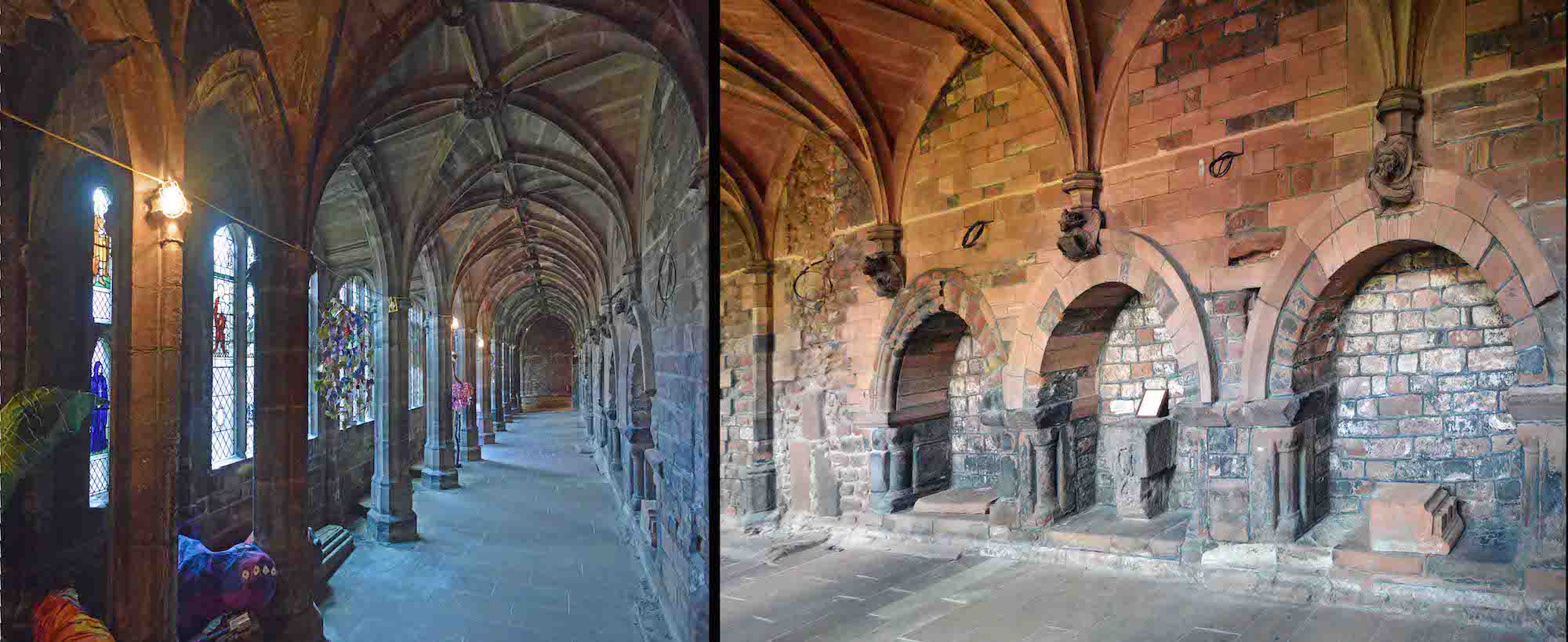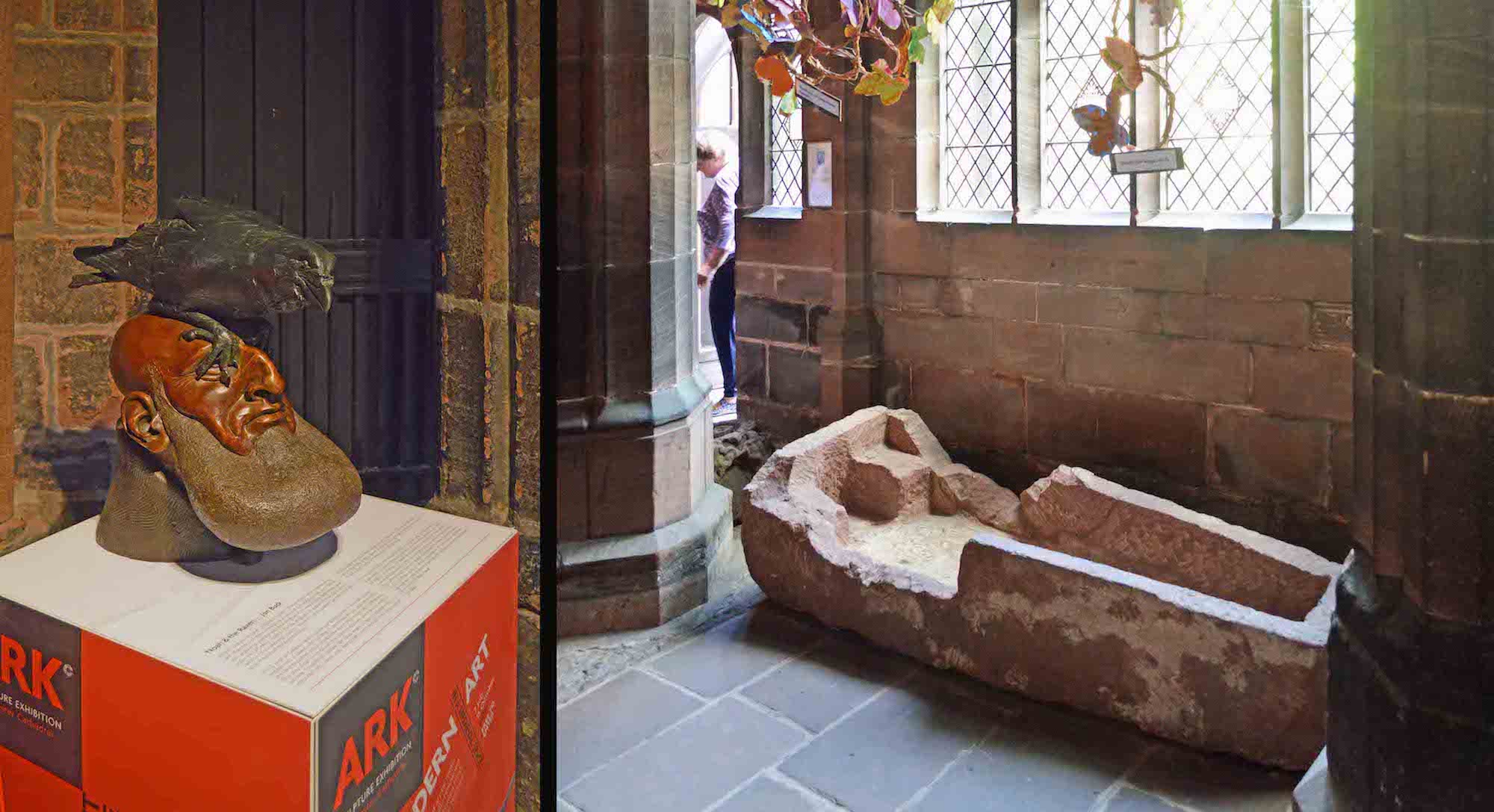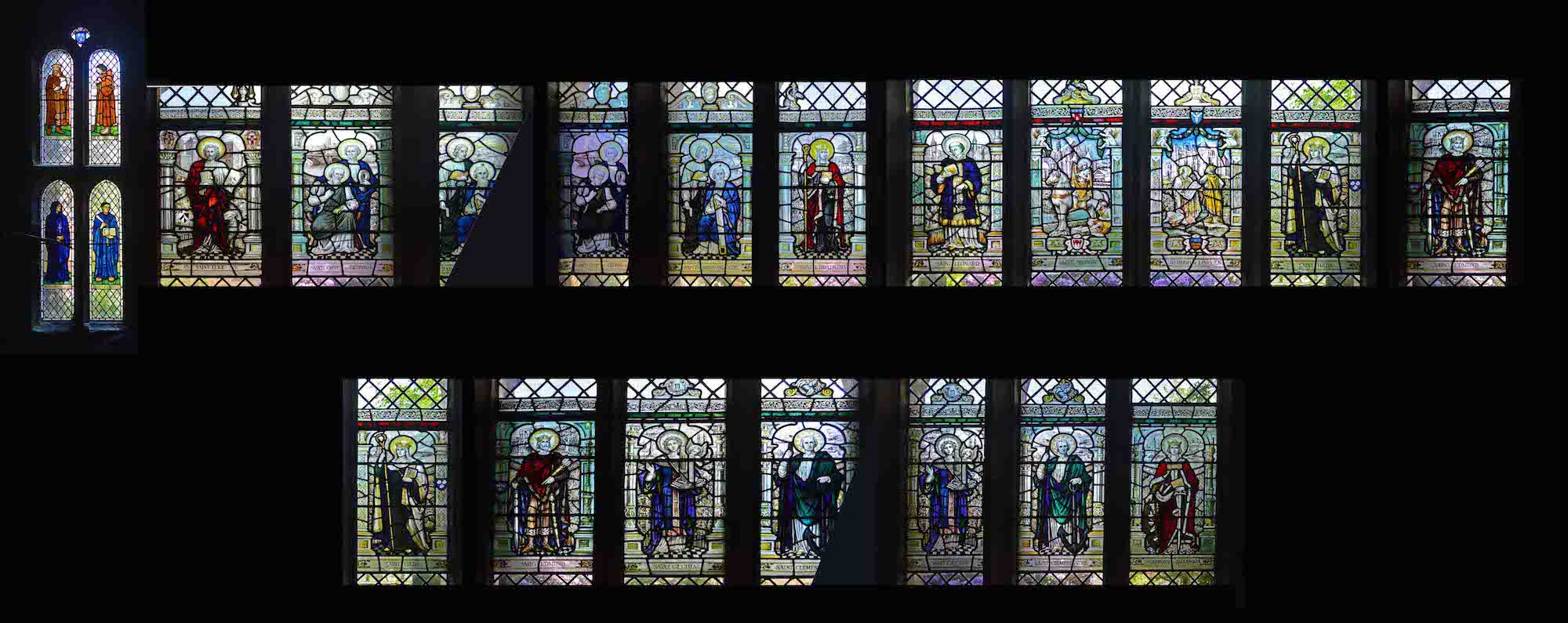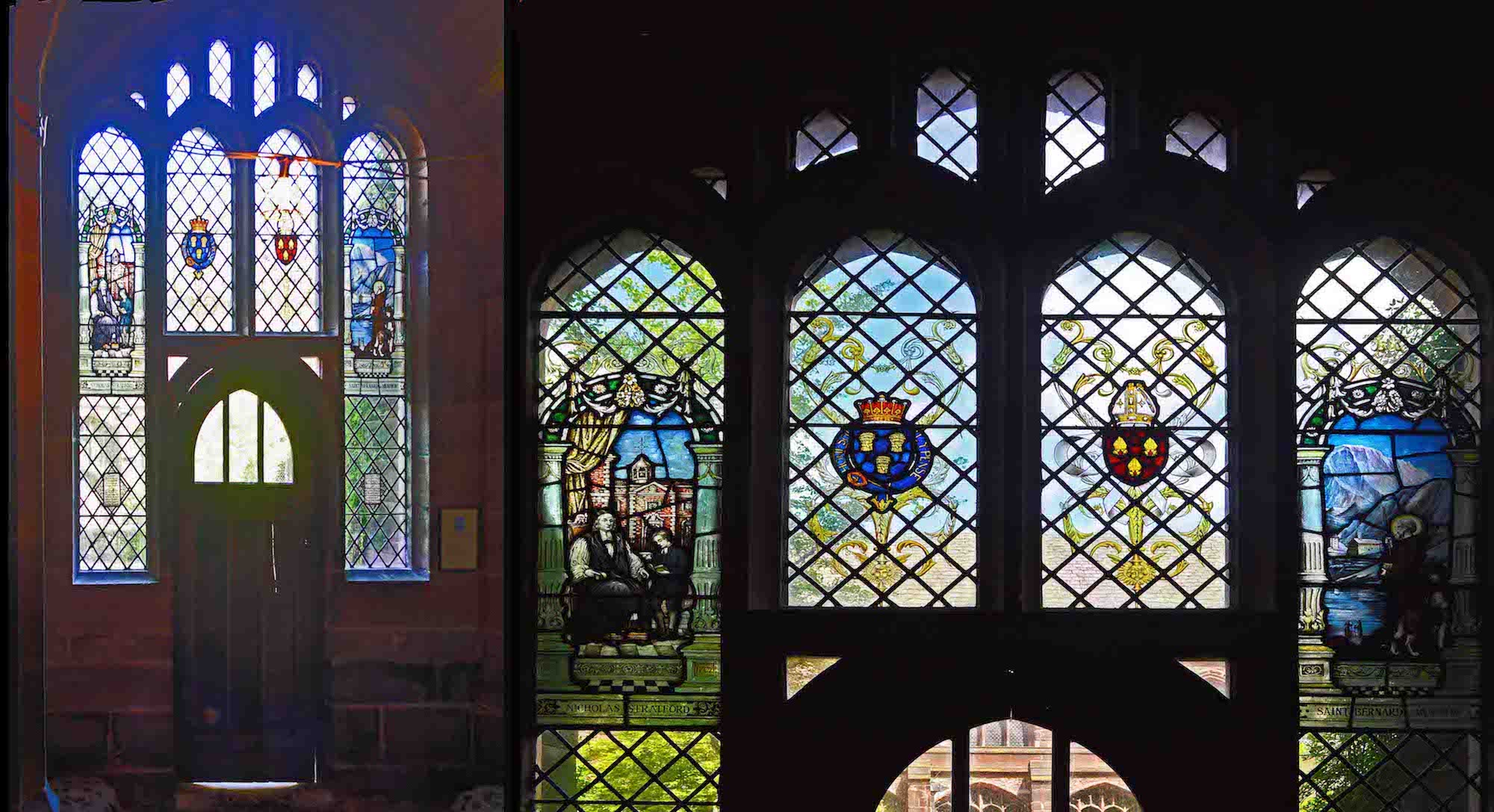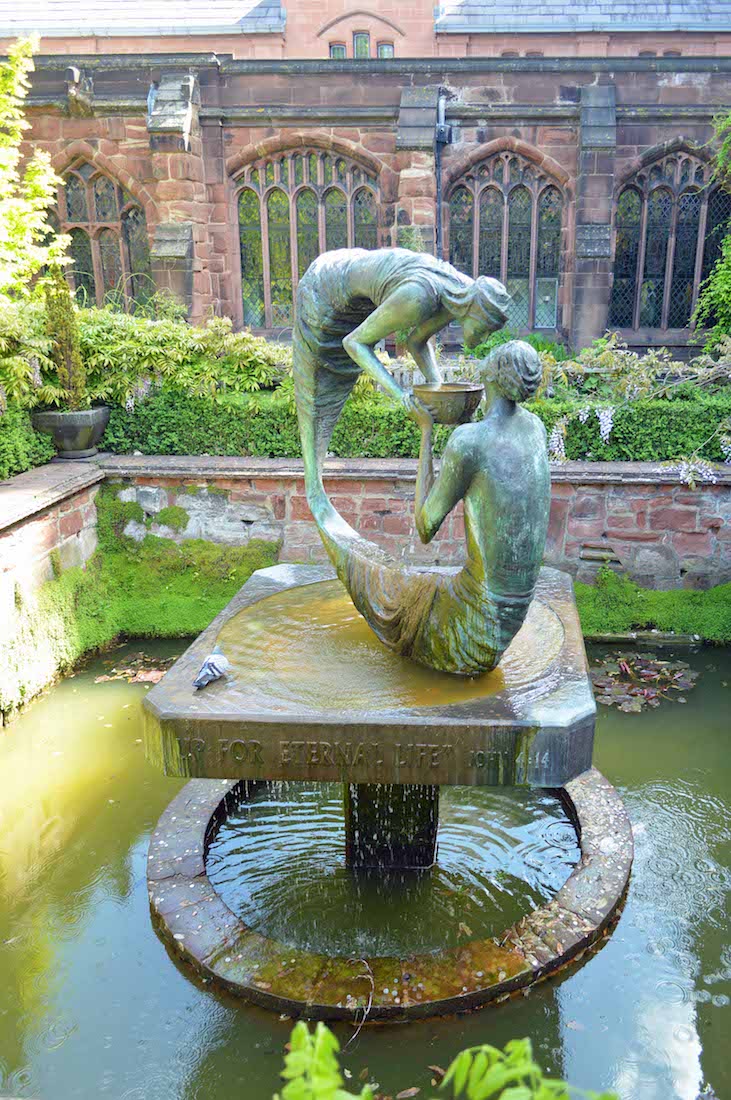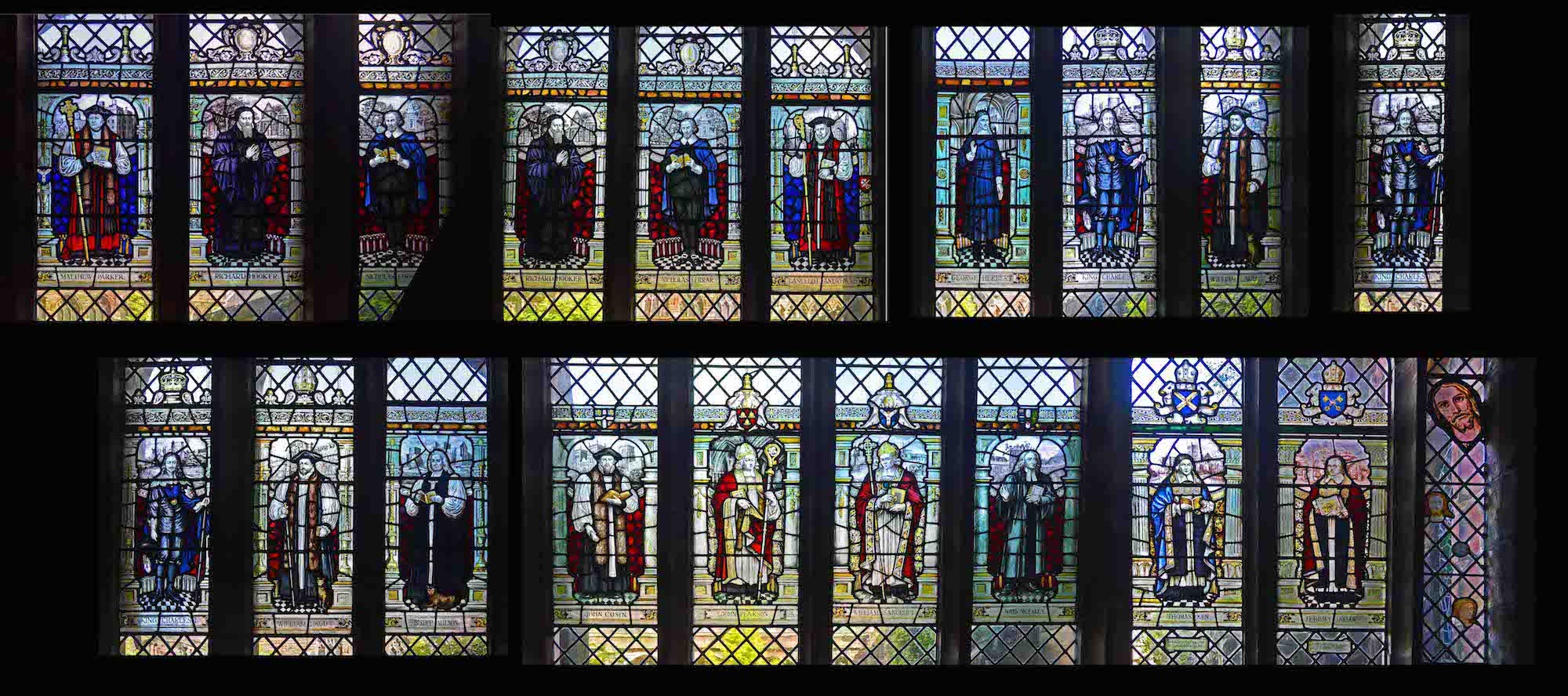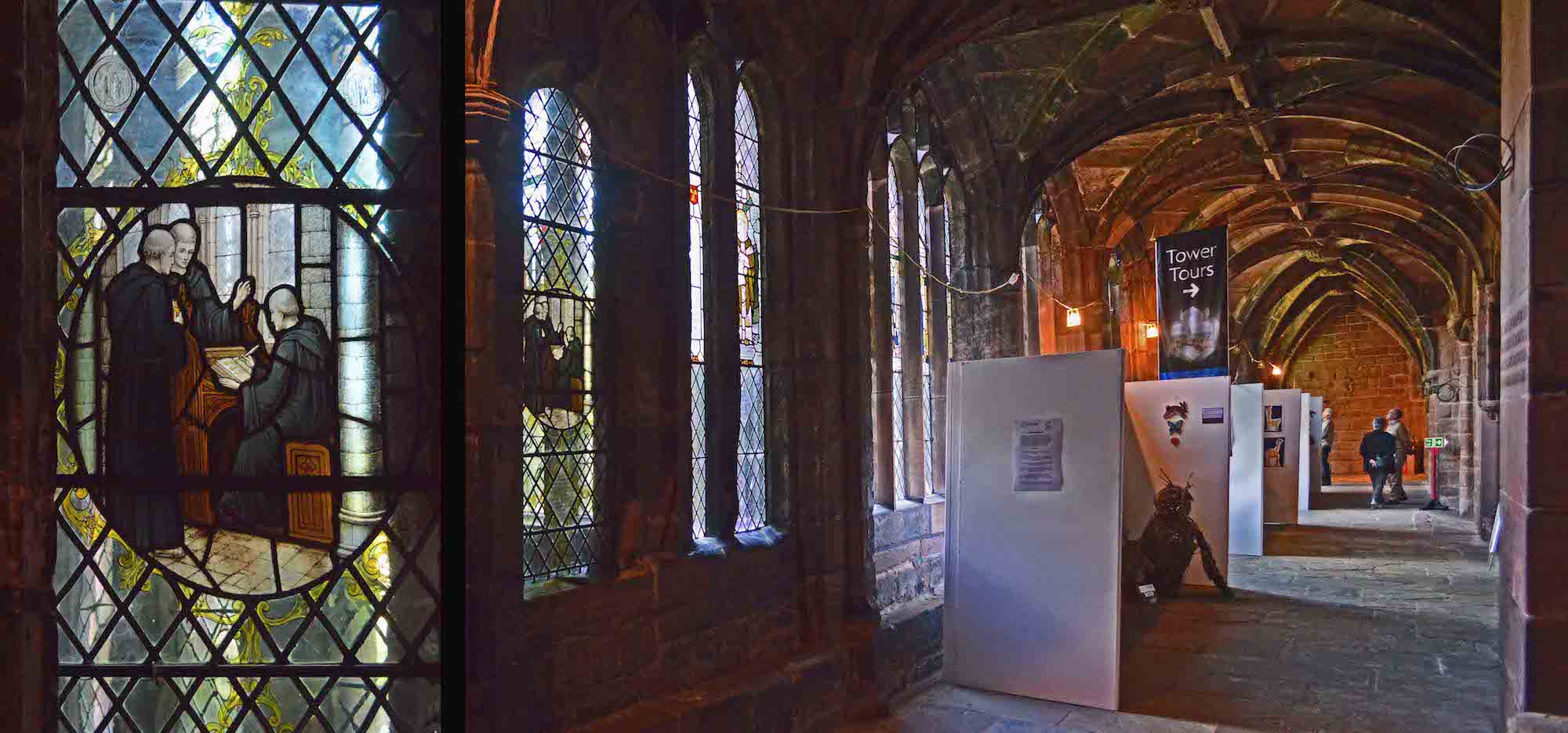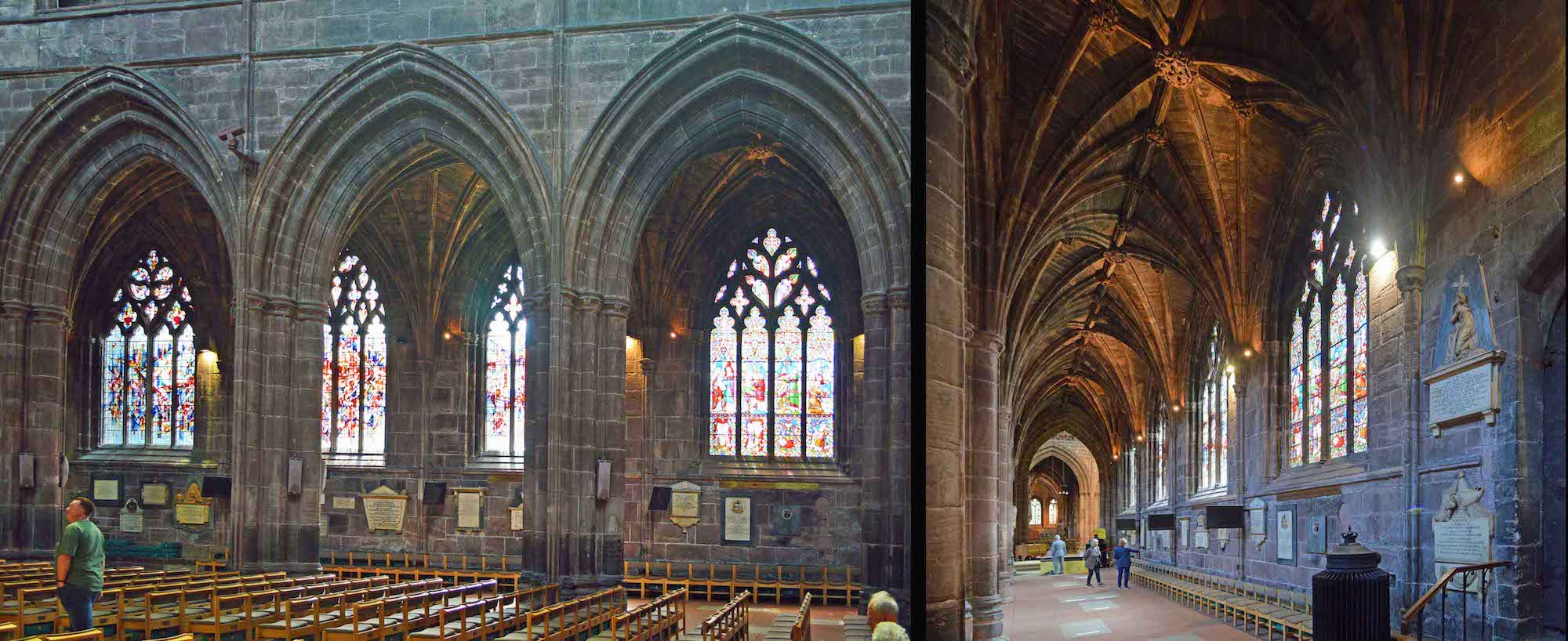
The South nave is more conventional, with a wide aisle running the length of a wall with full stained glass windows, and the various plaques below. There are also several TV screens, presumably used for display purposes rather than in services? (There are none on the North wall.) PLAN
22. SOUTH NAVE WALL
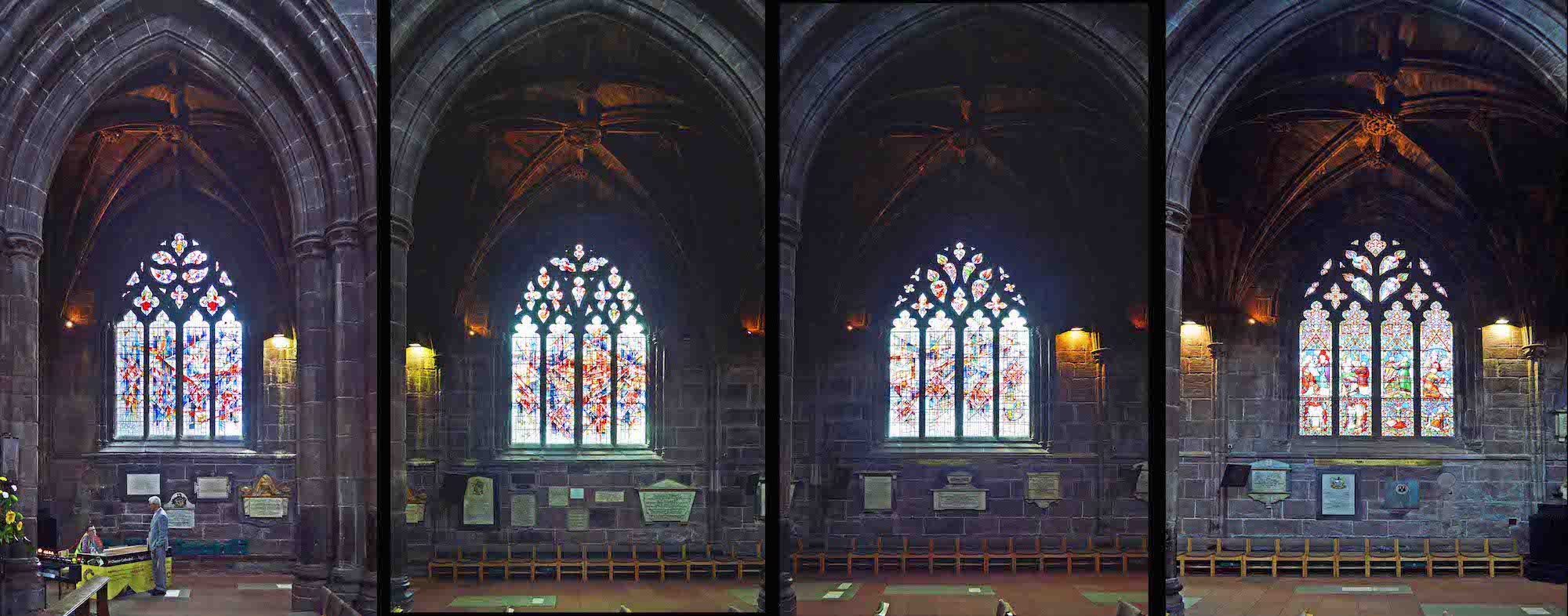
This view of the South nave wall through the arches shows that the windows are mostly modern.
23. SOUTH NAVE WINDOWS
The three modern windows at left are called the Westminster Windows, They were created in 1992 by Alan Younger, and donated by the Duke of Westminster to celebrate the 900th anniversary of the Cathedral. The windows that were originally here were damaged during the war. Some elements of the original windows have been salvaged and incorporated into the design of the new windows. The panels of the window at right appear to show (i) Simeon blessing the Christ child, (ii) Samuel and Eli, (iii) ? (iv) the translation of Elijah.
24. NAVE SOUTH DOOR
We next come to the old South exit door. The steps at right lead to the Consistory Court.
25. ENTRY TO THE CONSISTORY COURT
The consistory court is a type of ecclesiastical court, especially within the Church of England. They were established by a charter of King William I of England, and still exist today, although since about the middle of the 19th century consistory courts have lost much of their subject-matter jurisdiction. Each diocese in the Church of England has a consistory court (called the Commissary Court in the Diocese of Canterbury).
26. BISHOP’S CONSISTORY COURT
The Bishop’s Consistory Court of Chester dates from 1636 and is beneath the Southwest tower. It is now a unique survival in England, hearing its last case, that of an attempted suicide of a priest, in the 1930s.
27. BAPTISTRY
The baptistry is covered and something of a mystery! It features a marble font, consisting of a bowl on a large baluster dating from 1697, yet carved with Christian symbols such as peacocks (representing the resurrection) and bearing the first and last Greek letters alpha and omega. The font was given in 1885 by Earl Egerton who acquired it in Venice. To the West of the font is a door and spiral staircase leading up to the chapel of St Anselm.
28. TO ST ANSELM’S CHAPEL
At the top of the stairs we come to a short passage leading Eastwards to the chapel. On the right is a small altar. The chapel was built as the abbot’s private place of prayer.
29. SMALL SIDE ALTAR
The small side altar is a simple table with an old crucifixion plaque hanging above. St Anselm's Chapel dates from the 12th century. It is in three bays and has a 19th century Gothic-style plaster vault.
30. THE CHAPEL ITSELF
The chapel is quite simple. On the altar stands a colourful painting and two candlesticks. The hanging altar cloth has a white sun symbol with the acronym IHS – the first letters of the name ‘Jesus’ in Greek. Leaving the chapel we notice an ornate Crucifix by one of the nave columns.
31. THE NORTH NAVE AGAIN
We are about to investigate the cloister, but our attention is drawn once more to the North nave wall. Above the arches are clear clerestory windows, but there are also small windows of interest, just above the mosaics.
32. NORTH NAVE WINDOWS
At top left is an old window with two angels and the text, ‘Unless a man be born of water and of the Spirit, he cannot enter the Kingdom of God’ (John 3:5). Each of the remaining windows contains a pair of angelic musicians. There is some continuing text of praise and blessing too, which comes from ‘The Benedicite’ or ‘A Song of Creation’. This is a canticle that is used in the Roman Catholic Liturgy of the Hours, and is also used in Anglican and Lutheran worship.
33. SOUTH CLOISTER
To the North of the nave is a large square cloister garden bounded by walkways. This is particularly impressive in that all the surrounding arches are filled with stained glass. The cloisters were largely rebuilt around 1525-30, during the final days of the abbey, with rib-vaults and perpendicular windows. These three niches are against the nave wall.
34. CLOISTER ART
During my visit, the cloisters and chapter house were home to displays of art of various kinds. I guess authorities believe that these will add interest to a Cathedral visit, but they can be a source of frustration for visitors who wish to enjoy the Cathedral ’as it was’.
35. SOUTH CLOISTER WINDOWS I
There are a great number of cloister windows here! These are the windows at the Western end of the South cloister. The group of four characters at top left are King Alfred, (St) Plegmund, Abbot Whitchurch, and Ranulph Higden. The remaining windows picture (from left to right): St Luke, SS Crispin & Crispinian, SS Simon & Jude, St Etheldreda, St Leonard, St Martin, St Hugh of Lincoln, St Hilda, St Edmund, St Cecilia, St Clement of Rome, St Catherine of Alexandria.
36. CLOISTER DOOR
Half way along the South cloister is a door which leads through to the cloister garden. The door is set in its own window of four panels. Above the door are two coats of arms: the left one resembles an early coat of arms for Chester; the right is clearly ecclesiastical. And on the sides are depicted Nicholas Stratford (1633 – 1707) (bishop of Chester) and St Bernard of Menthion.
37. CLOISTER GARDEN
The cloister garden is a very attractive area with lawns, paving, garden seats, and a fountain.
38. CLOISTER FOUNTAIN
The ‘Water of Life’ is a sculptural water feature presenting the life changing encounter between Jesus and the woman of Samaria. Around the base are the words of John 4:14 where Jesus promises that those who drink the water he offers will never thirst, but the water will be a spring of water welling up for eternal life.
39. SOUTH CLOISTER WINDOWS II
Returning to the South cloister, we continue our investigation of the windows to the East of the door. Here are depicted (from left): Matthew Parker, Richard Hooker, Nicholas Ferrar, Lancelot Andrewes, George Herbert, King Charles I, William Laud, Bishop Wilson, John Cosin, John Pearson, William Sancroft, John Wesley, Thomas Ken, Jeremy Taylor. Then there is a small window depicting Christ and a couple of others.
40. EAST CLOISTER
As we make our way around the cloister, we come to the East cloister. We shall find here more windows, and the entry to the chapter house. Our first window shows three monks around a writing desk.


